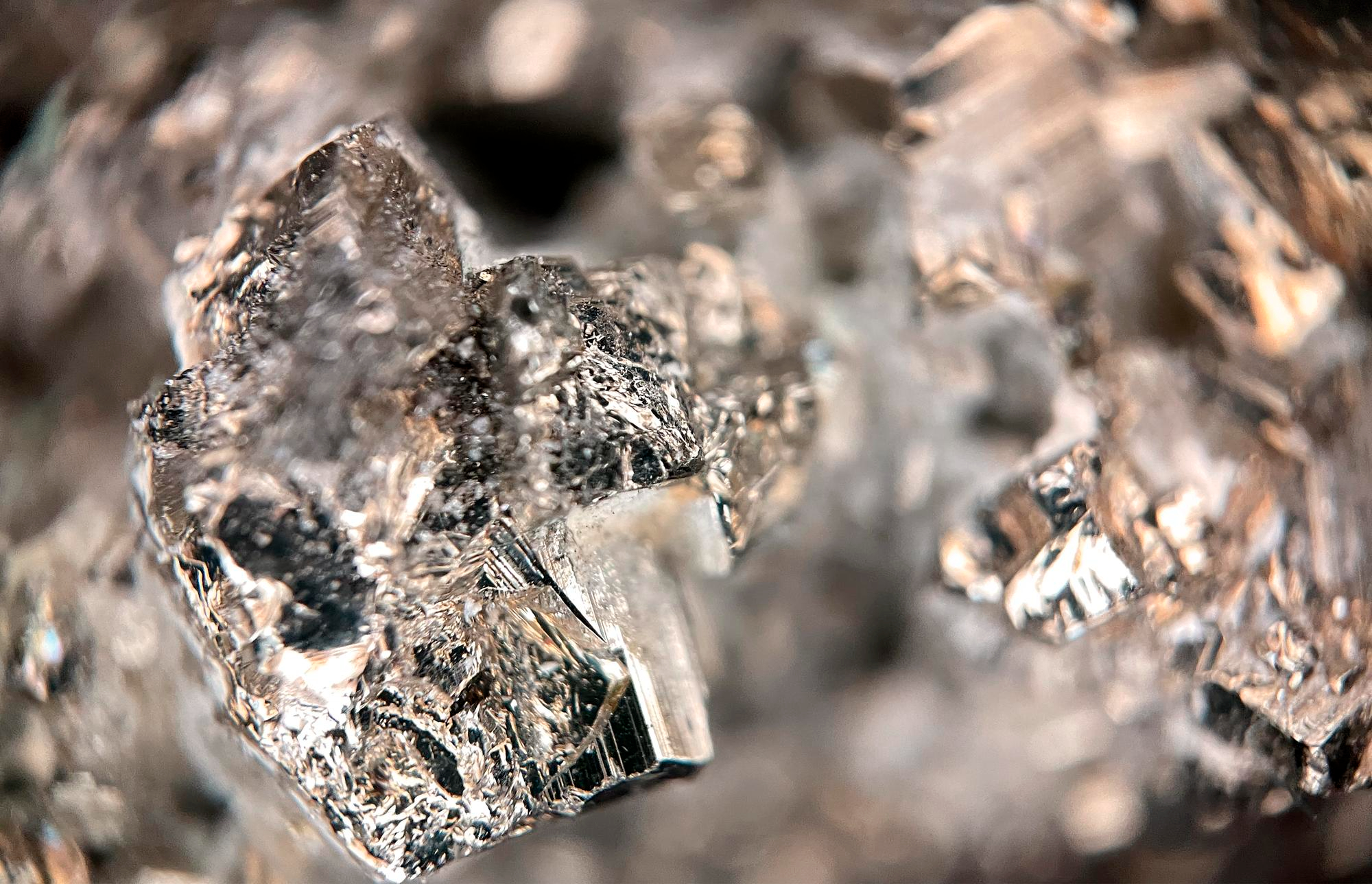Table of Contents
Scientists have found that a gray, metallic mineral called miassite is not just a regular superconductor. It is also an “unconventional” superconductor. This is very special because until now, only materials made in laboratories were unconventional superconductors. Miassite is made of rhodium and sulfur. It is the first mineral found in nature that is an unconventional superconductor.

News Reading in Levels
Beginner Level: Scientists Find Special Mineral
Scientists have found a special metal in nature. It is called miassite. Miassite is gray and shiny. It is made of two things: rhodium and sulfur. Miassite is a superconductor. This means it can move electricity with no resistance. But miassite is also an “unconventional” superconductor. This is very rare. Until now, only man-made materials were unconventional superconductors. Miassite is the first natural mineral to be an unconventional superconductor.
Superconductor (noun) – a material that can conduct electricity with no resistance.
Unconventional (adjective) – different from what is usual or traditional.
Mineral (noun) – a solid, inorganic substance found in nature.
Resistance (noun) – the opposition to the flow of electric current.
Rhodium (noun) – a rare, silvery-white, hard, and durable metal.
Intermediate Level: Researchers Discover First Natural Unconventional Superconductor
Scientists have identified miassite, a naturally occurring mineral, as an unconventional superconductor. Superconductors are materials that can conduct electricity without any resistance, but conventional superconductors only exhibit this property at extremely low temperatures and high pressures. Unconventional superconductors, on the other hand, do not conform to the standard theory of superconductivity and have been previously found only in laboratory-created materials.
Miassite, a gray, metallic mineral composed of rhodium and sulfur, was first recognized as a regular superconductor in 2010. However, recent research published in the journal Communications Materials has revealed that miassite possesses the unique characteristics of an unconventional superconductor, making it the first naturally occurring mineral to display this remarkable property.
Unconventional (adjective) – different from what is usual or traditional.
Superconductor (noun) – a material that can conduct electricity with no resistance.
Resistance (noun) – the opposition to the flow of electric current.
Conform (verb) – to comply with rules, standards, or laws.
Exhibit (verb) – to show or display something.
Native Level: Nature’s Unconventional Superconductor Challenges Scientific Understanding – Miassite
In a remarkable discovery, scientists have unveiled miassite, a naturally occurring mineral, as an unconventional superconductor, a feat previously achieved only by laboratory-synthesized materials. This groundbreaking finding, published in the journal Communications Materials, has significant implications for our understanding of superconductivity and the potential for harnessing this phenomenon in practical applications.
Superconductivity is a state in which certain materials can conduct electricity without any resistance, enabling the flow of electric current with virtually no energy loss. Conventional superconductors, as described by the Bardeen-Cooper-Schrieffer (BCS) theory, require extremely low temperatures and high pressures to achieve this state, making them impractical for many real-world applications.
Unconventional superconductors, however, do not adhere to the BCS theory and exhibit superconductivity through different mechanisms. Until now, these materials have been exclusively synthetic, created under highly controlled laboratory conditions. Miassite, a gray, metallic mineral composed of rhodium and sulfur, has shattered this paradigm by becoming the first naturally occurring unconventional superconductor.
Unveil (verb) – to reveal or make something publicly known.
Feat (noun) – a remarkable achievement or accomplishment.
Harness (verb) – to control and make use of a natural source of energy or power.
Adhere (verb) – to follow or conform to a particular theory, principle, or rule.
Paradigm (noun) – a typical pattern or model of something.
Check Your Understanding
Let’s check your understanding about the news!
The Bottom Line
The discovery of miassite as an unconventional superconductor is a significant breakthrough. It opens up new possibilities for finding and studying other natural materials that may exhibit unconventional superconductivity. This could lead to a better understanding of the underlying mechanisms and potentially enable the development of practical applications at higher temperatures. However, further research is needed to fully explore the potential of miassite and other natural superconductors.
References
- Phys.org: Scientists reveal the first unconventional superconductor that can be found in mineral form in nature
- ScienceAlert: Scientists Identify The World’s First ‘Unconventional’ Superconductor Found in Nature
